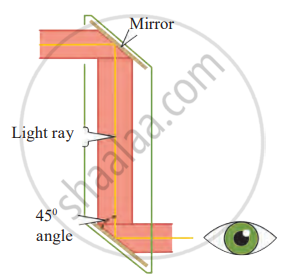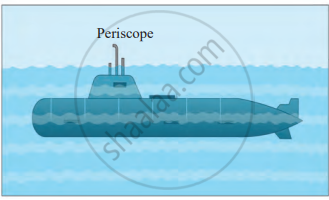Topics
Living World and Classification of Microbes
Health and Diseases
Force and Pressure
- Force
- Types of Force: Contact Force
- Types of Force: Non-Contact Force
- Balanced and Unbalanced Forces
- Inertia and Mass
- Types of Inertia
- Thrust and Pressure
- Pressure on Solids
- Pressure of liquid
- Gas Pressure
- Atmospheric Pressure
- Buoyancy Force (Upthrust Force)
- Archimedes Principle
- Density of substance and Relative density
Current Electricity and Magnetism
Inside the Atom
Composition of Matter
- Matter (Substance)
- Characteristics of Particles (Molecules) of Matter
- States of Matter
- The Solid State
- The Liquid State
- The Gaseous State
- Elements
- Types of Element: Metals
- Types of Element: Non-metal
- Type of Element: Metalloid
- Compound
- Types of Compound
- Mixture
- Types of Mixtures
- Solution
- Suspension Solution
- Colloidal Solution
- Molecular Formula of Compounds
- Valency
Metals and Nonmetals
- Types of Element: Metals
- Physical Properties of Metals
- Chemical Properties of Metal
- Types of Element: Non-metal
- Physical Properties of Non-metal
- Types of Element: Non-metal
- Chemical Properties of Non-metal
- Type of Element: Metalloid
- Uses of metals and nonmetals
- Nobel Metal
- Purity of Gold
- Corrosion of Metals
- Alloy
Pollution
- Pollution and Its Types
- Air Pollution and Its Causes
- Effects of Air Pollution
- Prevention of Air Pollution
- Water Pollution and Its Causes
- Effects of Water Pollution
- Prevention of Water Pollution
- Soil Pollution and its Causes
- Effects of Soil Pollution
- Prevention of Soil Pollution
- Relationship of Soil Pollution with Air and Water Pollution
- Laws for Control, Regulation, and Prevention of Pollution by Indian Government
Disaster Management
Cell and Cell Organelles
- Cell: Structural and Functional Unit of Life
- Prokaryotic and Eukaryotic Cell
- Plant Cell and Animal Cell
- Structure of the Cell
- Cell Wall - “Supporter and Protector”
- Plasma Membrane
- Cytoplasm - “Area of Movement”
- Nucleus - “Brain” of the Cell
- Endoplasmic Reticulum (ER)
- Golgi Apparatus - "The delivery system of the cell"
- Lysosome - “Suicidal Bag”
- Mitochondria - “Power House of the Cell”
- Plastids
- Non-living Substances Or Cell Inclusion
Human Body and Organ System
- Human Body
- Human Organ System
- Mechanism of respiration-Breathing
- Human Respiratory System
- Blood Circulatory System in Human
- Human Heart
- Blood Vessels
- Circulation of Blood in the Heart (Functioning of Heart)
- Heart Beat - Heart Sounds "LUBB" and "DUP"
- Blood
- Composition of Blood: Plasma (The Liquid Portion of Blood)
- Composition of Blood: Red Blood Cells (Erythrocytes)
- Composition of Blood: White Blood Cells (Leukocytes)
- Composition of Blood: Blood Platelets (Thrombocytes)
- Functions of Blood
- Blood Transfusion and Blood Groups (ABO and Rh system)
- Blood Pressure (B.P.)
- Heart Related Conditions
Introduction to Acid and Base
Chemical Change and Chemical Bond
Measurement and Effects of Heat
Sound
Reflection of Light
Man Made Materials
Ecosystems
Life Cycle of Stars
- Introduction of Periscope
- Working and Uses of Periscope
- Experiment
Introduction of Periscope:
A periscope is a simple optical instrument that uses the principle of reflection of light to allow people to see objects that are not in their direct line of sight. It is especially useful for observing objects over or around obstacles. The device is made using two mirrors placed at specific angles to reflect light and guide the image from one point to another.
Structure of a Periscope:
- Cardboard Tube or Box: Serves as the body of the periscope, enclosing the mirrors and guiding the light.
- Two Mirrors: Fixed at 45° angles, they reflect light from the object to the viewer.
- Windows: Openings at the top and bottom allow light to enter and exit the periscope.

Periscope
Working and Uses of Periscope
Working:
- Light from the object enters the top opening of the periscope.
- The light hits the first mirror, which is placed at a 45° angle, and is reflected downwards.
- The light then hits the second mirror, also at a 45° angle, and is reflected sideways toward the viewer’s eye.
- This arrangement allows you to see the object without directly facing it.
Uses:
- In submarines, it is used to observe objects above the water surface while remaining submerged.
- In bunkers, it allows soldiers to monitor surroundings from a protected underground position.
- In observation towers, it is used for keeping watch over large areas.

Periscope on a Submarine
Experiment
1. Aim: To construct a periscope and observe how it uses the reflection of light to see objects not directly visible.
2. Materials Required: cardboard box, two small mirrors, sticking tape, and scissors or cutter.
3. Procedure
- Take a cardboard box and make slits on the top and bottom sides.
- Place two mirrors inside the box at an angle of 45°, parallel to each other, and secure them with sticking tape.
- Cut two small windows (about 1 inch each) near the mirrors- one at the top and one at the bottom.
- Look through the bottom window and observe what is visible through the top window.

Periscope
4. Observation: When you look through the bottom window, you can see objects in front of the top window, even if they are not directly in your line of sight.
5. Conclusion: The periscope works on the principle of reflection of light, where light reflects off two mirrors placed at 45° angles, allowing the user to see objects that are out of their direct view.
